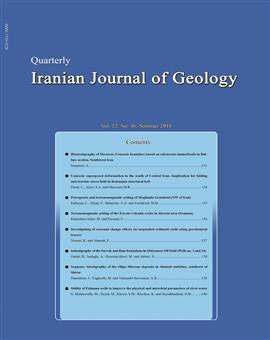Cenozoic superposed deformation in the south of Central Iran: Implication for folding and tectonic stress field in Rafsanjan structural belt
Subject Areas :لیلا عبادی 1 , Seyd Ahmad Alavi 2 , Mohamad Reaz Ghasemi 3
1 -
2 -
3 -
Keywords: Rafsanjan Paleostress Rotation block Superposed fold Polyphase.,
Abstract :
The South Central Iran Block has experienced polyphase intensive deformation in the Cenozoic time. Large-scale superposed folds in South Rafsanjan document the Cenozoic tectonic events within the South Central Iran Block. In this study, a case study of this deformation inferred from regional-scale Rafsanjan superposed folds in the south of Central Iran is presented to reconstruct the deformation sequence and tectonic regime during crustal shortening. These data indicate that the superposed folds, dominated by a two-stage tectonic transpression regime which experienced two phases of superposed folding, leading to the orthogonal superposition of WNW–ESE-trending folds onto NE–SW trending folds. Structural analyses and fault kinematic analyses in the Rafsanjan Structural Belt indicate a two-stage syn-folding paleo-stress field during the Cenozoic. The early phase of tectonism is characterized by late Miocene NW-SE transpression, which led to the development of NE-trending fold structures and causing the occurrence of an orogeny perpendicular shortening. This tectonic event was most likely associated with progressive anticlockwise rotation of the Central Iran Block. Subsequent tectonic event from Late Miocene until Quaternary contributed to a phase of contraction that overprinted the early NNE–SSW shortening in the interior parts of the studied area and generated a large-scale NE-convex fold belt and the typical large-scale superposed folds within the South of Central Iran Block. In terms of geodynamics, the later tectonism is likely to have been related to the NE-directed convergence between the Arabian and the Eurasian Plates.
